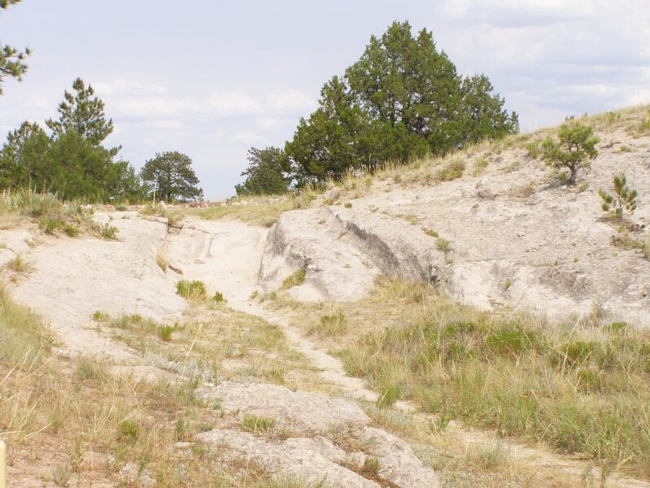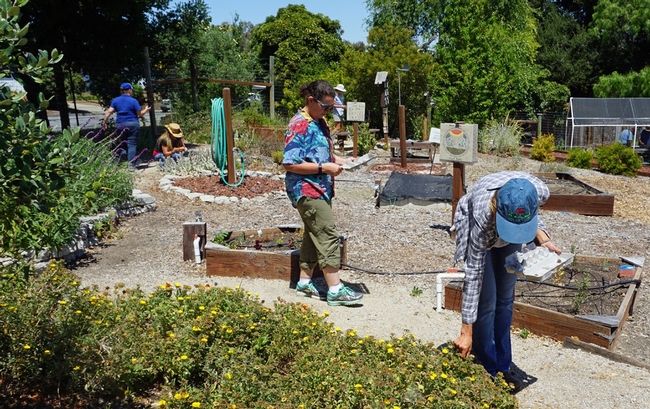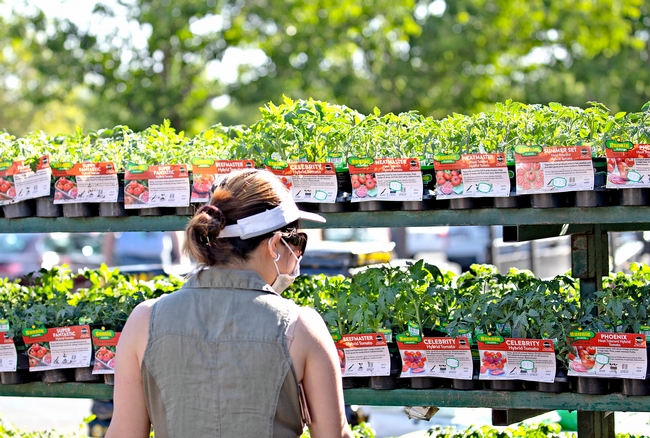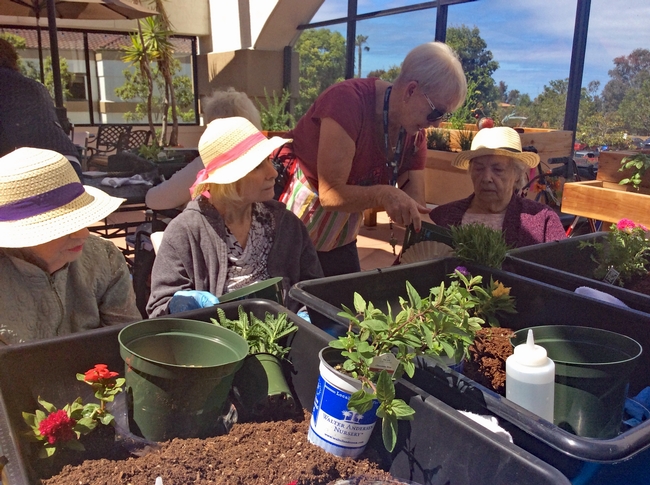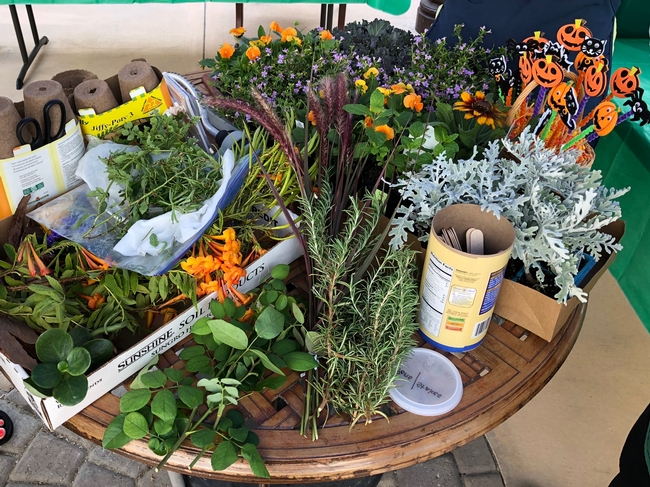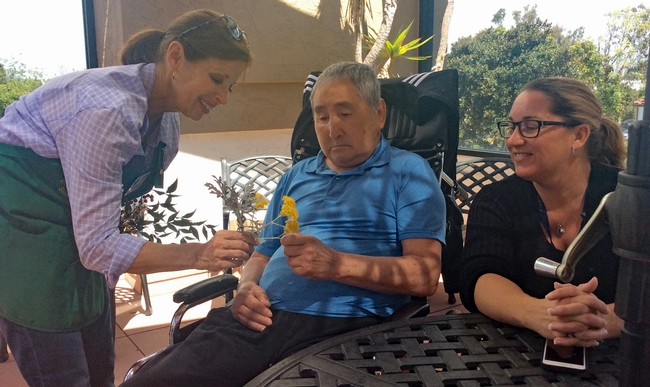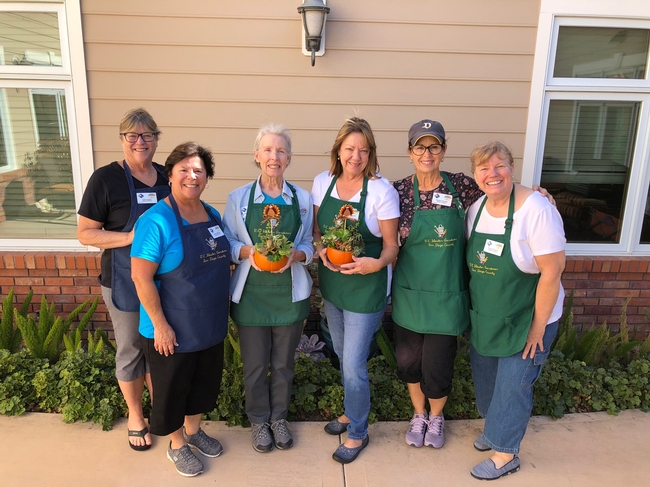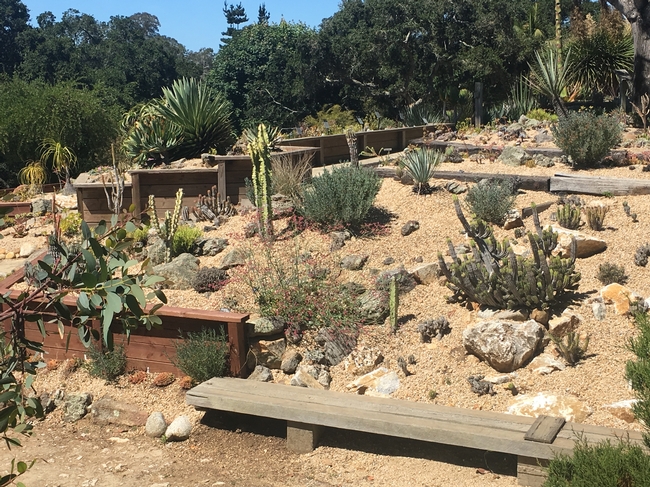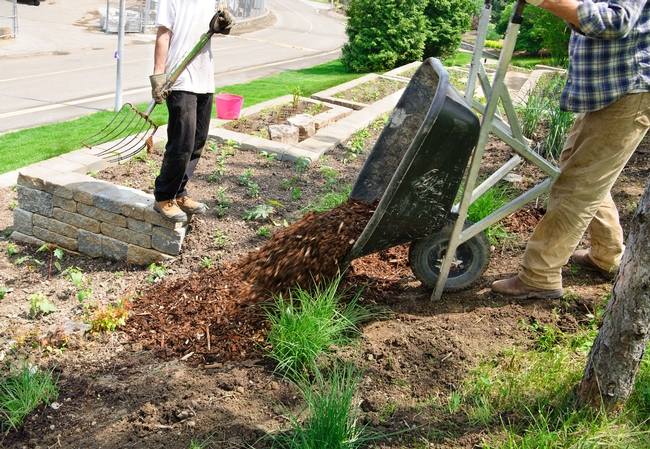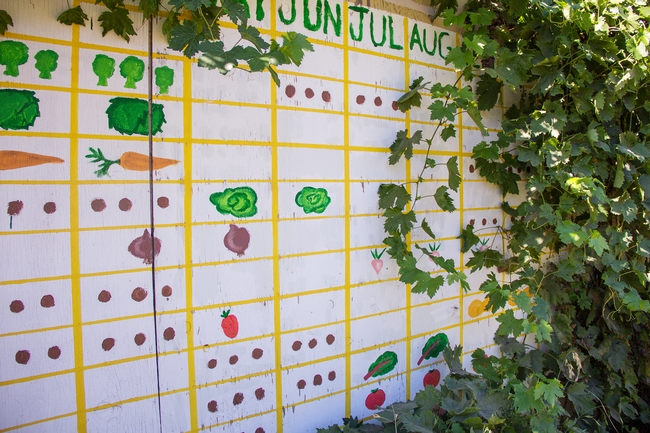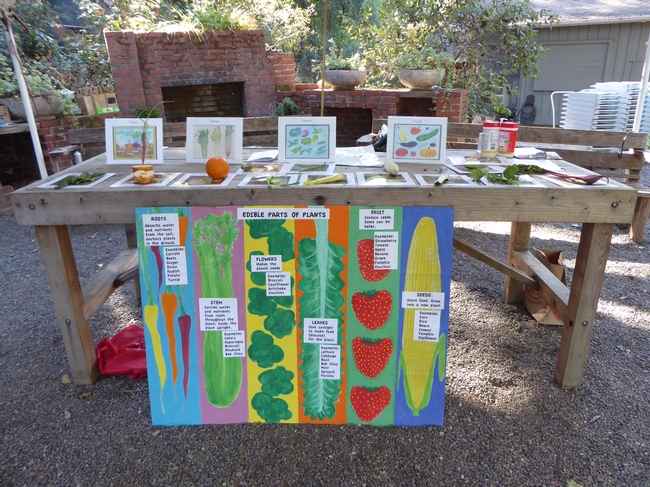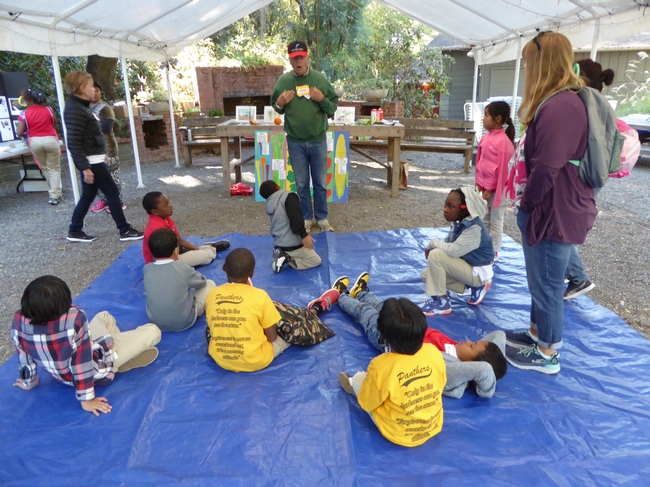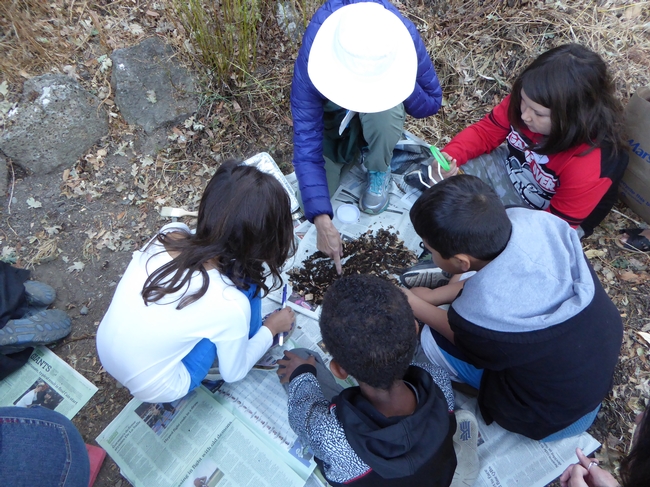Posts Tagged: gardening
Home gardening is more pleasant and successful with healthy soil
With winter soon upon us, it's a good time to treat your garden bed just like the one where you tuck in at night, says Dustin Blakey, UC Cooperative Extension advisor, director and UC Master Gardener coordinator in Inyo and Mono counties.
Blakey hosted a webinar on Facebook during Healthy Soils Week 2020 (Nov. 30 – Dec. 5) to advise home gardeners how to promote healthy soils to maximize their gardening success.
“Some genius suggested we call garden plots ‘beds,'” he said. “It makes sense. Mom was right. Don't stand or walk on the bed. Keep it neat and tidy. And cover it, in the case of a garden bed, with organic mulch.”
The goal is to end up with garden soil that holds adequate water, nutrients and air, supports soil life forms, like worms, insects and microorganisms, and is convenient to work with.
“If I have to get a mallet to bang a trowel into the ground, it's not healthy soil,” Blakey said.
As a first step, designate permanent walkways in the garden so only those areas become compacted by foot traffic, leaving the plots where vegetables will be grown undisturbed.
“Along parts of the Oregon Trail, almost 200 years later you can still see the ruts where the wagon wheels rolled, and plants aren't growing there,” Blakey said.
He recommended gardeners cover their walkways with gravel, decomposed granite or organic materials like wood chips, bark or grass. Installing raised garden beds is an ideal way to differentiate growing and walking areas. In his own garden, Blakey built the beds four feet wide to have easy access to all the plants while standing on the walkways.
Add compost to the soil inside the beds to reap a variety of benefits.
“It's often said, no matter the problem, compost is the solution,” Blakey said.
Compost provides a food source for beneficial microorganisms in the soil. If soil is sandy, compost helps it hold water and nutrients. If the soil is clay-like, compost loosens the soil, making it more friable.
Covering the garden soil surface with mulch or cover crops is also critical to soil health, Blakey said. The topping moderates the soil temperature, supporting the organisms living below ground. The covering helps prevent weeds, and as the mulch breaks down, it adds organic matter to the soil.
“You can also grow cover crops,” Blakey said. “I'm surprised how few gardeners use cover crops. Put some seeds in the ground instead of buying a bag of amendments.”
Cover crops can be part of a healthy garden crop rotation, keeping roots growing in the soil all year long.
“Grasses scavenge nutrients. Legumes fix nitrogen. I grow sweet potatoes. They shade everything and keep the weeds at bay. A daikon radish cover crop penetrates deep into the ground, naturally tilling the soil,” he said.
Blakey discourages a common habit of some long-time gardeners, frequent rototilling with a heavy machine, and rather encourages what he calls “gentle tilling.”
“You don't need power equipment. Experiment with using a shovel,” he said. “My soil is loose and easy to work. Some beds, I don't even turn. I just plant directly in the healthy soil.”
View a recording of Blakey's one-hour webinar on healthy soil on the UC Master Gardener Program Facebook page: https://www.facebook.com/UCMasterGardeners. The UC Master Gardeners offer many online gardening resources and programs in most California counties. Find your local program at http://mg.ucanr.edu/FindUs.
Seeds of hope: Gardening in grim times
Across the United States, Americans are buying and growing plants as a pick-me-up during the COVID-19 crisis, reported Lisa Irizarry in Newsday. The paper focused its story on Long Island, N.Y., its area of local circulation, but turned to UC Cooperative Extension emeritus advisor Rose Hayden-Smith for commentary about the trend.
Hayden-Smith is the author of "Sowing the Seeds of Victory - American Gardening Programs of World War I" and now serves as the educational technology fellow for eXtension, an organization that helps extension professionals generate a more visible and measurable local impact. Hayden-Smith said plants can have a calming effect in stressful times. Increases in gardening occurred during the 1918-19 influenza pandemic and during World Wars I and II.
"We always turn to gardening during times of crisis in this country. The last big surge of gardening interest was during the last economic crisis," she said.
In the current environment, people are gardening for a family activity, to grow healthy food and acquire new skills, as reflected in the rise of other home arts, such as baking.
"It's earth-friendly and connects people with nature," Hayden-Smith said. "It's restorative and a way to be physically active. It feels as if it's something we take positive action on."
UC Master Gardeners partner with Alzheimer's San Diego in Reminiscence Gardening project
The UC Master Gardener Program of San Diego County has always been open to innovative ways of expanding its mission and passion for gardening into new parts of its community. The San Diego program has a rich history of successful partnering with other local organizations to reach under-served populations. An exciting new collaboration was unveiled in March 2018 when five UC Master Gardener volunteers took their newest public outreach project Reminiscence Gardening to the Alzheimer's San Diego's (AlzSD) social activities program.
Thirty participants, all community members being served by AlzSD, got their hands dirty and enjoyed a day of sensory stimulation through tabletop gardening activities planned by the UC Master Gardener leaders. The 90-minute program gave participants the opportunity to touch, move, smell, hear and see the joys of manipulating soil and plants to construct a simple potted creation to adorn their spring celebration table.
UC Master Gardener volunteers knew it would be important to develop activities that were fun and, hopefully, something those in attendance had previously enjoyed. With marigolds, chrysanthemums and mint varieties in hand, participants and caregivers, worked side-by-side and guided by UC Master Gardeners, dug into the bins filled with soil, pots and tools. Each set of participants was given three plants to pot up. As this first activity progressed, UC Master Gardeners could see that participants were being drawn out and interactions around the worktable were increasing. The physical, intellectual, emotional and social benefits of gardening were being experienced and shared by all.
Other sensory-heavy opportunities, all planned and guided by UC Master Gardeners, were included in the program. Participants were asked to reach into a bin filled with loose soil and wriggler worms to re-familiarize themselves with that most basic part of backyard gardening – working the soil. A variety of plants in one-gallon containers were passed around. Each container was specially marked with an icon that invited the participants to experience the visual beauty, familiar smell, unique feel and, sometimes, sound and subtle taste of each plant.
Of particular interest was an activity in which everyone was asked to explore a box filled with hand tools, seed packets and other items typically used in backyard gardening. Clearly, old memories were refreshed. A vintage hose nozzle drew the attention of one gentleman. He held it for a while then began making the motions used in hand-watering the yard, moving the nozzle back and forth while mimicking the sound of water rushing forth from the attachment onto a once green and promising flower bed. Tangible signs of success, such as these, were everywhere during the social activity.
Jessica Empeño, MSW, Alzheimer's San Diego's Vice President of Programs and Services was in attendance and praised the work of the UC Master Gardener volunteers.
“Gardening was such a treat for our families. This activity stimulated all the senses – from the gorgeous colors of the flowers, the smell and taste of the herbs and the chatter and laughter that filled the room. Most importantly, those living with dementia and their care partners were able to socialize and have fun in a safe, judgment-free setting. We are so grateful to the UC Master Gardener Program for donating their time and supplies. We hope to have them back soon!”
The UC Master Gardener Program of San Diego was inspired by its growing understanding of the need for more everyday experiences to address the issues facing members of our community being affected by dementia-related diseases. Those numbers are increasing at a staggering rate. The National Alzheimer's Association estimates that currently 5.7 million Americans have been diagnosed with Alzheimer's, with nearly two-thirds of those being women, and that number will almost triple by mid-century. In San Diego County, AlzSD offers social activities for individuals with dementia and their caregivers. The “Reminiscence Gardening” project's goal for those individuals is to boost energy levels, build confidence, prolong maintenance of existing skills and perpetuate a sense of purpose and joy through gardening.
Further collaborations between the UC Master Gardener Program of San Diego County and other memory care communities are in the works. UC Master Gardeners want to share their love of gardening and their advanced training from the university for the benefit of those in our community who need it the most. Many of us know first-hand the responsibility of caring for a family member with a dementia-related disease. We know, too, the joys and benefits of being outdoors and sharing time together with people we love. We want to make a meaningful difference in our community and the Reminiscence Gardening project is a wonderful way to express that.
For a calendar of future events and more information about other programs offered by the UC Master Gardener Program of San Diego and Alzheimer's San Diego, please visit:
www.mastergardenersd.org
www.alzsd.org
Hot weather tips for the summer garden
This week much of California is under a heat advisory or excessive heat warning, with high temperatures estimated to range from 90 to 108 degrees. Many home gardeners are wondering how they can help their plants, trees or shrubs survive the intense summer heat.
“We are getting a lot of inquiries around the state from people worried about how the extreme temperatures are going to affect the plants or trees in their yards,” said Missy Gable, director of the UC Master Gardener Program. “With a little extra planning, you can help your garden beat the heat and survive the hot summer weather.”
UC Master Gardener volunteers are available to help answer gardening questions and provide advice on gardening during the hot summer months. Here are four quick and easy ways to help make sure your plants and trees not only survive, but thrive.
- Don't fertilize plants or trees during hot summer months
Fertilizers aim to increase the growth of plants and trees. When a fertilizer is applied, especially one that is high in nitrogen, a plant is triggered to produce more green growth. An increase in growth means an increase in water and nutrient needs. During hot spells, it is especially hard to keep up with plant water and nutrient needs as soils dry out quickly and water may not be readily available. Save your plants (and yourself!) from stress by stopping fertilizer application before hot weather hits. - Water trees deeply and less frequently
It sounds counter intuitive to water trees less frequently, but this is exactly what UC environmental horticulture experts recommend. “When watering trees you want to consider the roots below the tree and you want to encourage a network of deep roots. If you are only watering for short periods at a higher frequency, the roots will remain shallow since that is where the tree finds its water supply,” said Janet Hartin, UC ANR environmental horticulture advisor. “Deep roots mean a healthier tree that is less susceptible to disease.”
How much water a plant needs depends on the specific plant, how long it has been in the ground, and the type of soil where it is planted. In general, young plants or newly planted plants require more water than older more established plants. Clay soils absorb water slowly so watering can take longer but is typically done less frequently. This is in contrast to sandy soils that moisten and drain quickly. Typically, watering sandy soils take less time but has to be done more frequently. A Landscape Irrigation Scheduling Worksheet from the California Center for Urban Horticulture (CCUH) can be used to help calculate and determine an annual irrigation schedule for one irrigation zone.
- Mulch, mulch, and more mulch
When temperatures get extreme, having a good layer of mulch prevents soil from heating up excessively and loosing water to evaporation. Apply 4 inches of a medium shred bark mulch to insulate the soil. This protects the fine roots that plants use to feed from the surrounding soil. Mulch also helps maintain healthy soil ecology with earthworms and other de-composers that promote nutrients and oxygen in soil. Finally, mulch will pay for itself by maintaining a more consistent soil moisture so you can water less and have better success with your plants. Be sure to maintain the depth of your mulch to ensure you can benefit from all the services it provides.
An important part of gardening is planning for activities in the garden for future months. When the temperatures are too hot to spend outdoors, you can always start to develop a garden or planting plan. (Photo: Melissa Womack) - Wait to introduce new plants or trees until the fall
In gardening, timing is everything. New plants, whether grown in ground from seed or planted in your landscape from a container, have smaller root systems than more mature plants or plants that have been growing in your landscape for some time. Because root systems on new plants are smaller and need time to develop, these plants require more water more frequently. New plants introduced into a landscape during hot summer months have a significantly higher rate of failure. In California, it is best to introduce new plants in fall when the weather gets cooler. Winter rains can help keep new plants watered so they can establish and thrive in the future when temperatures are high and rainfall is scarce.
Always remember that you should take precautions for yourself while gardening in the summer months, especially during a heat wave. Remember to drink plenty of water and always have at least one quart of water per hour of outdoor activity. Limit time spent outdoors during peak temperatures and schedule any active time during cooler portions of the day. Always wear light loose clothing, a brimmed hat, and sunscreen as protection.
Thankfully we're not trying to garden on the surface of the sun. Unfortunately, sometimes it can feel like it for us and for our plants. Stay cool with these tips and consider planning for the fall to be an important part of your summer gardening activity.
Dig it, Grow it, Eat it: School gardens support learning and healthier food choices
The success of a garden is normally identified by plentiful crops of tomatoes and squash or the beautiful display of vibrant thriving flowers, shrubs or trees. However, a school garden's true success is dependent on the rich experiences and education students receive.
Taking the classroom into the garden
School gardens can play a big part in supporting a child's education outside of the traditional classroom environment; offering hands-on learning experiences in a variety of core curricula. Social sciences, language arts, nutrition and math are just a few of the many subjects that can be easily integrated into the school garden curriculum.
When paired with nutrition education, school gardens can transform food attitudes and habits.
“Gardens containing fruits and vegetables can change attitudes about particular foods; there is a direct link between growing and eating more fruits and vegetables,” said Missy Gable, statewide director for the UC Master Gardener Program. “Programs statewide connect people to local community gardens, or provide school administrators and staff the information needed to get started with their own school, community or home garden.”
“Dig it, Grow it, Eat it”
The UC Master Gardener Program of Marin County hosts an award-winning school gardening program that emphasizes engaging students with the many learning opportunities in nature. The program is a portable field trip for school-age youth called “Dig it, Grow it, Eat it.”
“Dig it, Grow it, Eat it” starts with University-trained UC Master Gardener volunteers training school educators. Once trained, educators use the curriculum to teach students how to grow edible plants from seed to harvest. UC Master Gardener volunteers help deliver the curriculum and provide additional resources. Students learn how plants grow, and receive nutrition lessons to give them a better understanding of the human body's need for healthy food.
The half-day workshop rotates groups of students through six stations providing them with garden enhanced nutrition education, linking health with growing and harvesting foods they like to eat and are good for them. These include:
- Edible Plant Parts
- How Plants Grow
- Plant Seed Science
- Propagation
- Soil Science
The “Dig it, Grow it, Eat it” curriculum is centered on the theme “We love the earth because we care for it. We care for the earth because we love it.” For many children, getting their hands dirty in the garden and discovering the science of growing their own food brings a sense of joy and pride they can carry with them for years to come.
Connect with us
The UC Master Gardener Program extends to the public free UC research-based information about home horticulture and pest management. In exchange for the training and materials received from the University of California, UC Master Gardeners perform volunteer services in a myriad of venues. If you are interested in becoming a certified UC Master Gardener contact your local UC Cooperative Extension office or visit mg.ucanr.edu.


